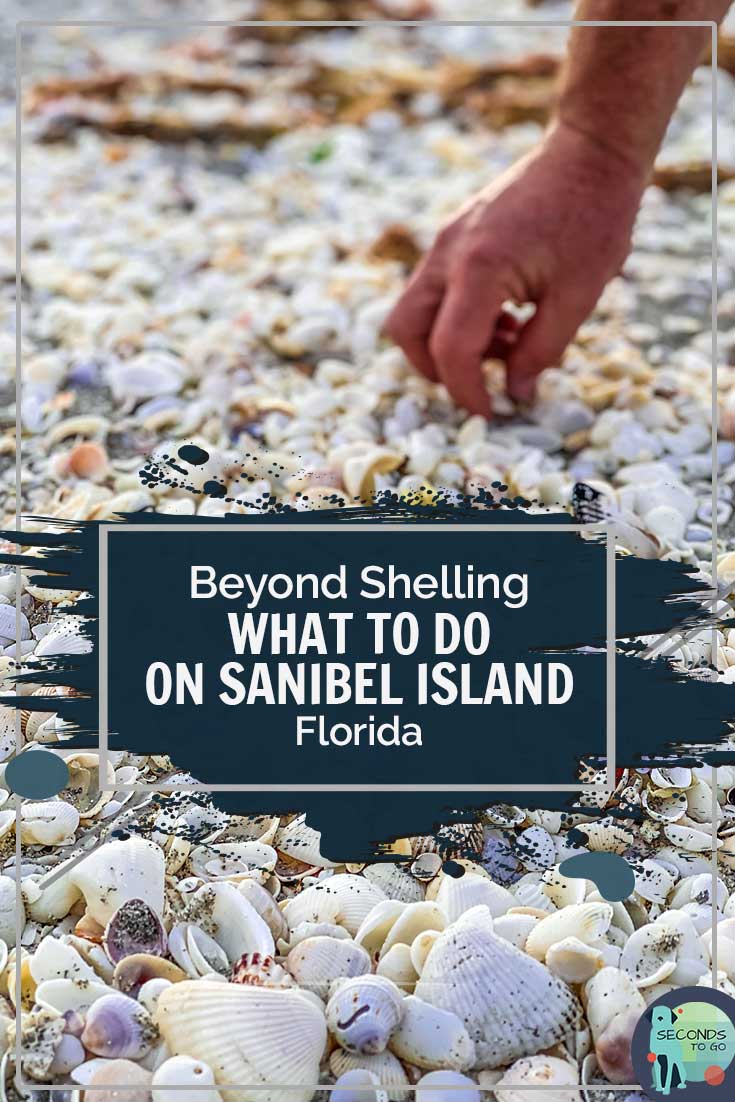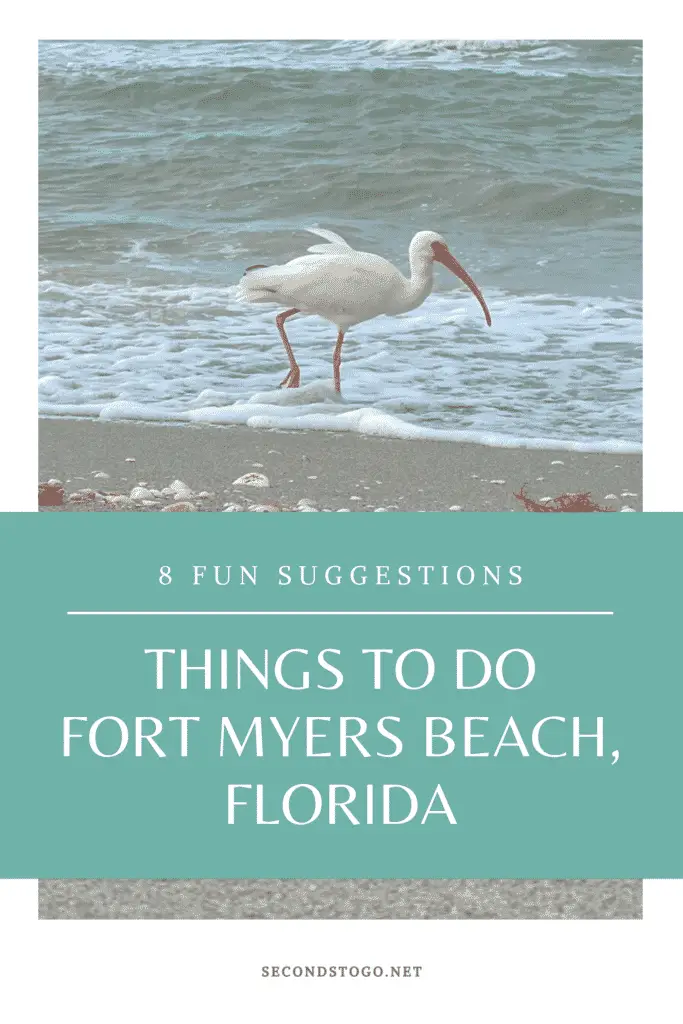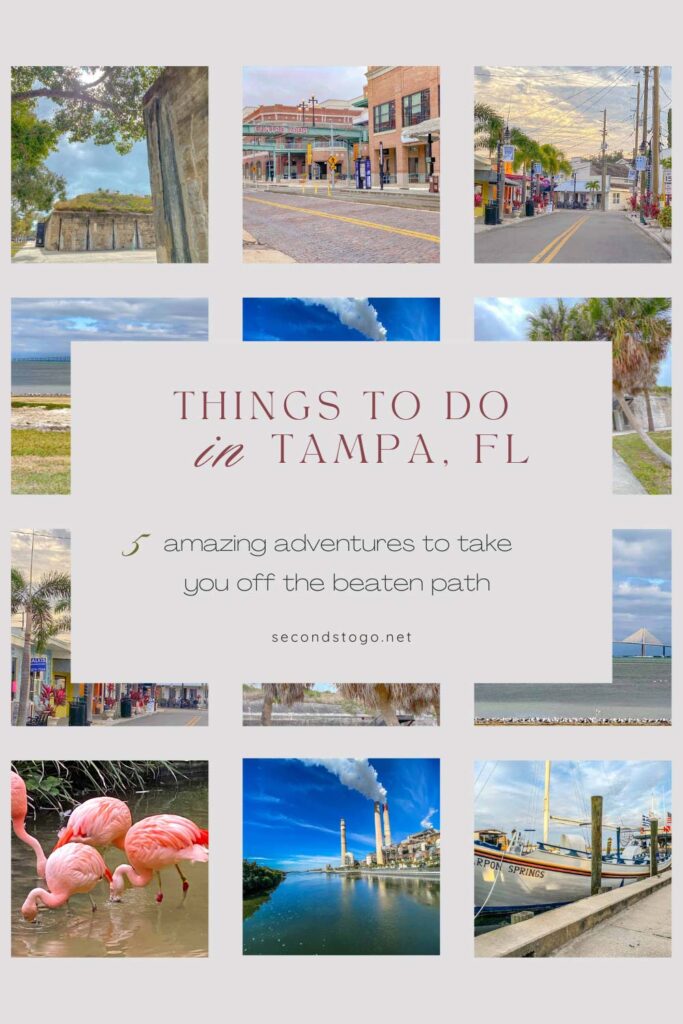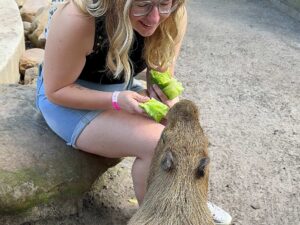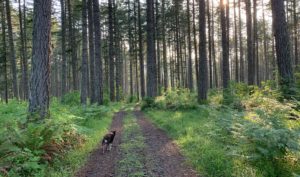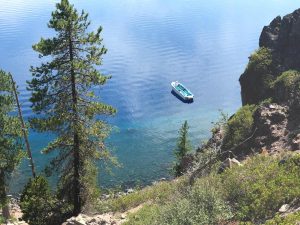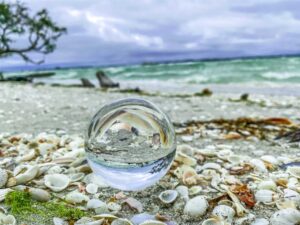Last update: Jan. 29, 2025
NOTE: On September 28, 2022, Sanibel Island was hit by Hurricane Ian, decimating much of the causeway that connects the island to the mainland and causing wide scale destruction. Two years later, the region was rocked by Hurricanes, Helene and Milton, slowing the ongoing restoration efforts. While travel to the island has resumed, you will continue to encounter construction efforts as well as buildings in disrepair from ferocity of the storms.
If you’re heading to Sanibel and wondering what to do on the island beyond searching for the perfect shell, then this itinerary is for you. We’ve made updates since Hurricanes Ian, Helene and Milton tore through the small island, weeding out the attractions that have been lost. Here’s our take on on Sanibel and what to do while you are there.
Heading Out to Sanibel Island
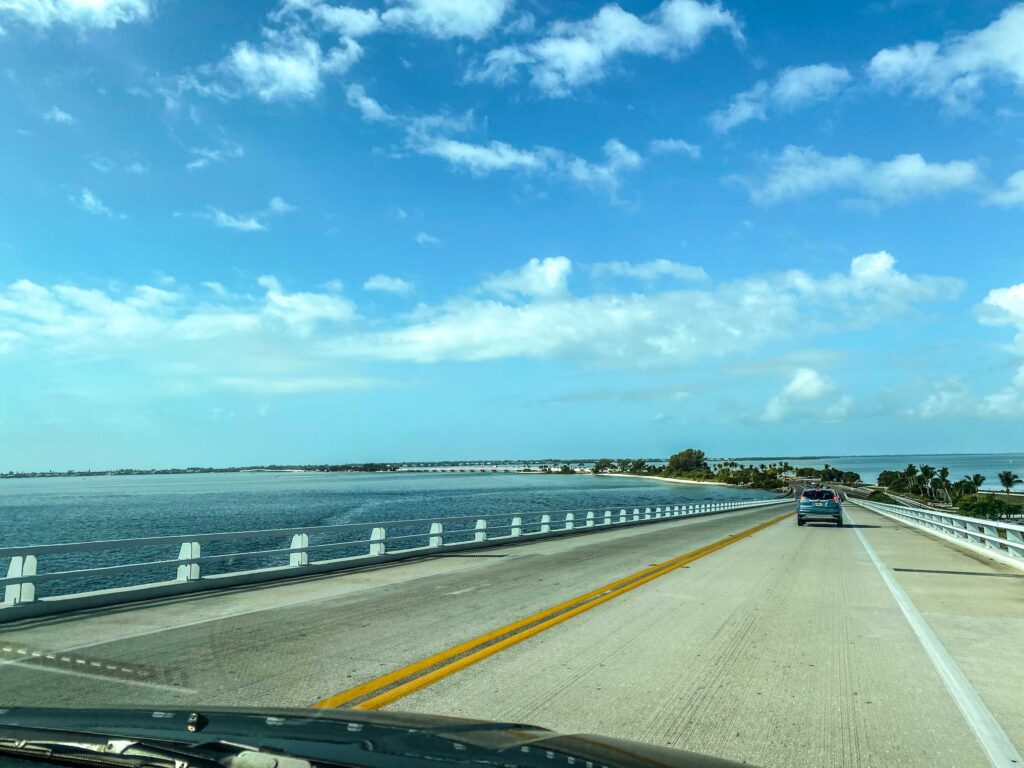
Our trip to Sanibel Island began with the amazing adventure called the Sanibel causeway. At over 15,000 feet long, the causeway is a series of two bridges connecting Sanibel Island to the Florida mainland. It is the only way on or off the island and can become a thing to do on Sanibel in and of itself as traffic can snarl to a near stop during peak times, usually mid-morning and late afternoon.
Fortunately, if you travel outside of rush hour, you’ll find the way relatively congestion free. Just be prepared to pay the $6 toll to access Sanibel island ($9 without a transponder) and the many things to do there.
While our excursion took place over the course of two days, our itinerary below can easily be accomplished in a single day if you start early.
As you head out in 2025 and beyond, things will look quite different from the image above. Many of the trees are missing and construction is still underway.
Sanibel, What to Do: Shelling Is King
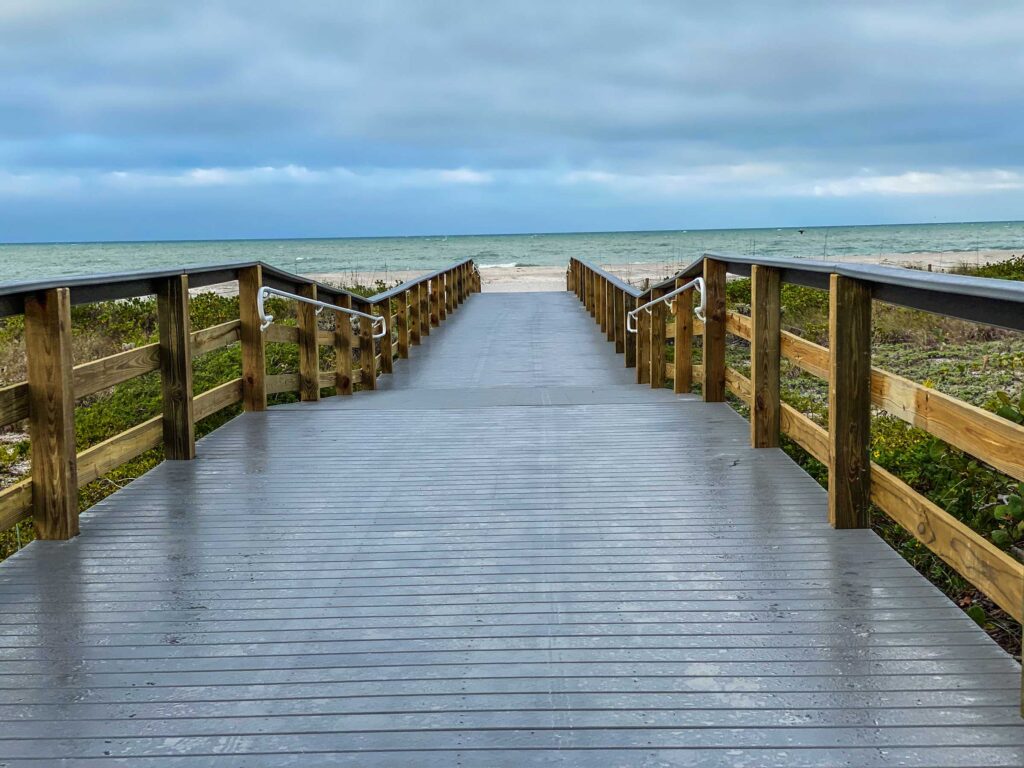
We headed out to Sanibel Island at 7:00 am for our shelling adventure. The best time to hit the shores is at low tide when the shells are visible, so we kept our eye on the tide charts. The goal was to pick a day when low tide hit outside of rush hour for the causeway.
We found Bowman’s Beach to be a nice place to start our exploration. Located at the northwest corner, the farthest end of the island from the causeway, Bowman’s offers picnic and restroom facilities, as well as interpretive signs to educate visitors on the ecology of the area and the natural wildlife. Parking is $5 an hour, payable at self-serve stations around the parking lot.
As the tide receded that morning, we found a variety of shells, including conch, scallops, tulip and coquina. However, we were a little disappointed that we didn’t find a single museum-quality specimen in the tremendous bounty the sea had deposited on the shore that morning. Most were broken or small, and none were close to the large conch we had daydreamed of finding.
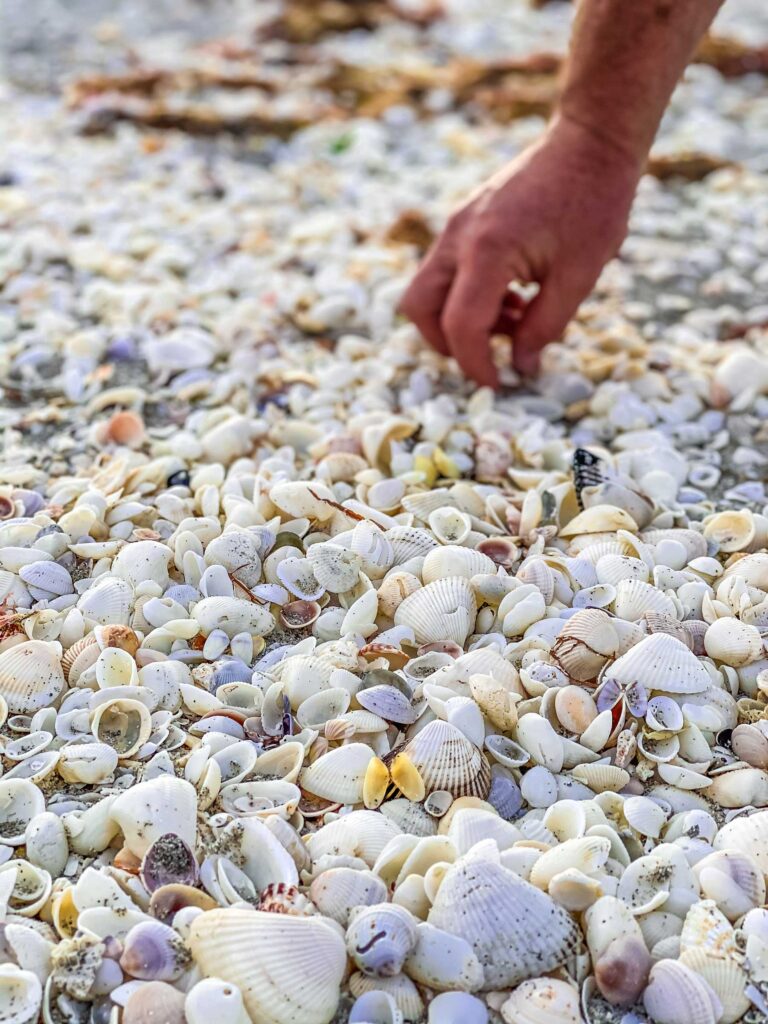
Rumor has it that the best samples are scooped up before dawn by hungry shell-mongers, those who sell the perfect specimens for a living. If these individuals do exist, we suspect they can be easily identified by their determined mien.
While travelers stroll leisurely, scanning the sand with a slow thorough inspection, stooping to examine a shell and then tossing most aside, there are those collectors who present a more polished demeanor. Endowed with the equivalent of a designer handbag, compared to the tourist’s plastic grocery sack, they enact a quick physical inspection of the ground, stooping only to pick up shells they intend to keep.
When visiting Sanibel and wondering what to do, shell hunting is one of the most famed activities, so we expected to join troves of other shell enthusiasts. Instead, we encountered around twenty beachcombers, all quietly scanning the shoreline. It could be that the cooling weather kept away the masses. It was cloudy, in the sixties, with temperatures predicted to fall throughout the day. In all, a perfect time to be on the beach if you don’t intend to take a dip in the sea.
Despite the impact of the hurricanes on the coast of Sanibel, shelling remains prime, with beautiful specimens still washing up on the beach daily.
Sanibel, What to Do: Nearby Captiva Island also Makes an Interesting Drive
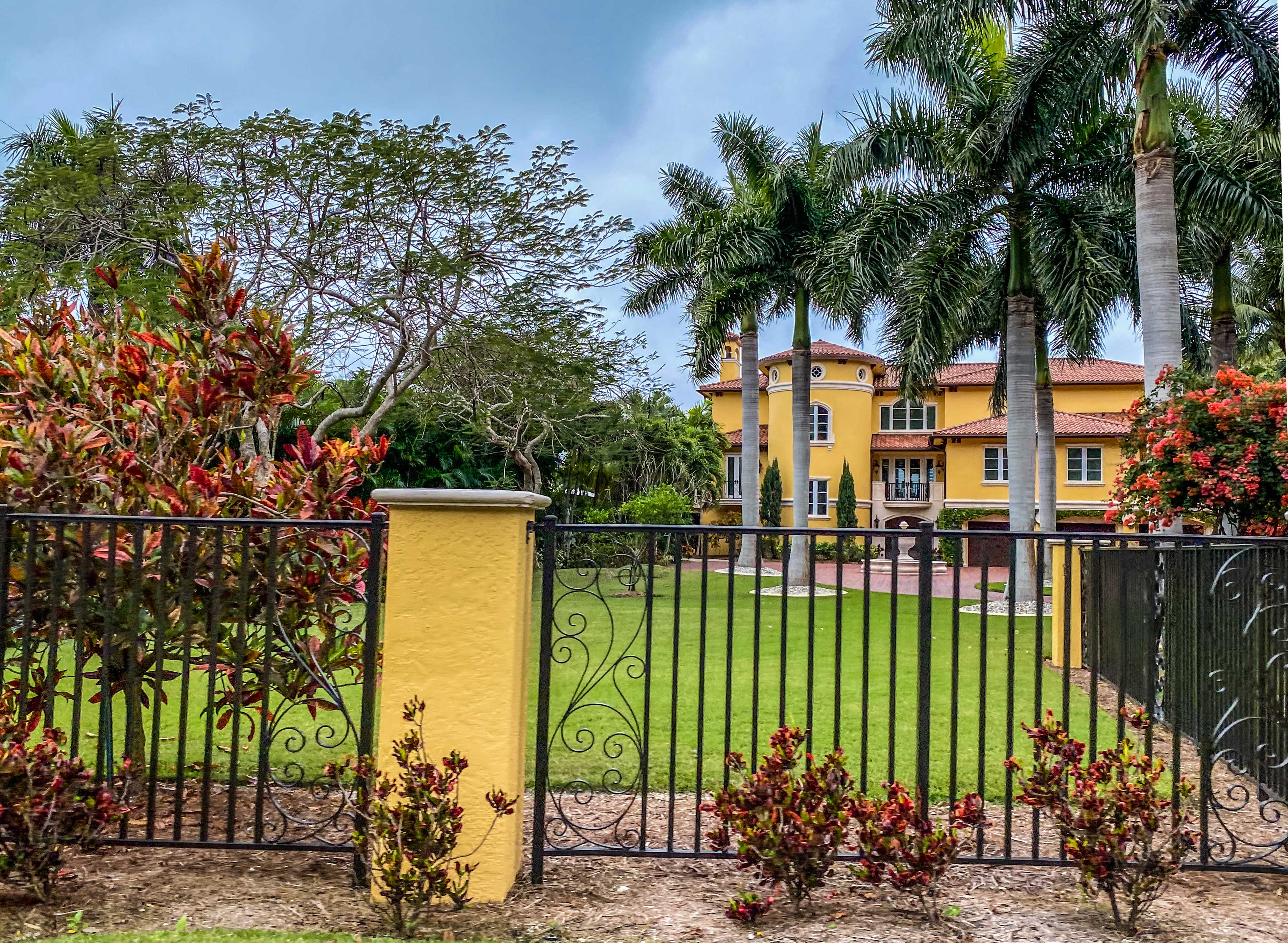
When considering what else we’d do on Sanibel Island, we couldn’t resist taking a quick jaunt over to Captiva. The causeway to the neighboring island is a quick left when leaving Bowman’s Beach and offered a peaceful and uncrowded morning drive.
We marveled at the mansion-sized homesteads lining the street. They’re not quite the equivalent of gilded-age Newport, Rhode Island, but proof nonetheless that American prosperity is still alive and well, at least for some.
When driving through Captiva, the ocean is never far from sight. We encountered a few beach access points, but with little public parking available, drove on by. Captiva seems to cater largely to residents or guests inhabiting one of the few public accommodations.
At the end of Captiva Drive, the island throws up some not so-friendly tourist gates in the form of South Seas Island Resort. This 330-acre retreat offers a secluded destination and every activity a happy beach traveler could ask for inside a gated community of vacation homes, condos and hotel rooms. It’s also the end of the line for outsiders, so we turned the car around and retraced our way back to Sanibel.
If you happen to hit Captiva at a different time of day, say sunset, it might be worth finding a place to park and settling in at a spot on the sand as Captiva sunsets are rumored to be worth the parking fee.
While Captiva rebounded from the wrath of Hurricane Ian, the damage from Hurricane Milton may still be evident.
Sanibel, What to Do: Paddling the Inland Waterways
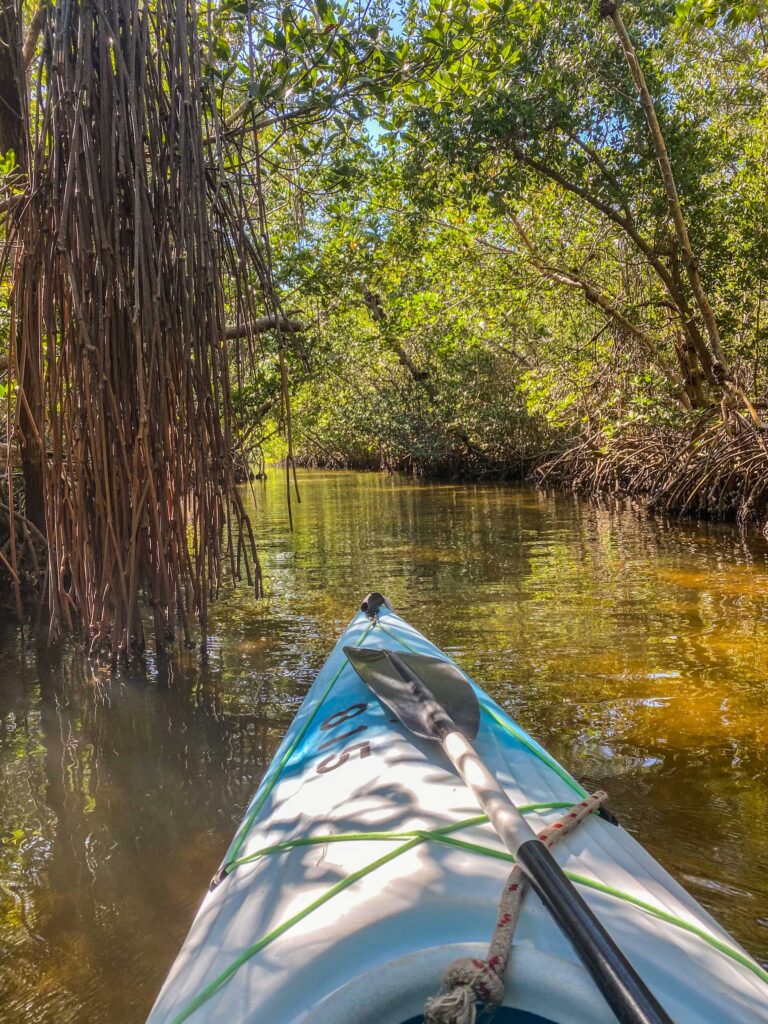
When considering what to do on Sanibel, we found one outdoor activity we couldn’t pass up—the chance to kayak one of the inland waterways.
Since we’d never been kayaking in Florida, we opted for a tour over heading out on our own. Tarpon Bay Explorers offers kayak adventures down Commodore Creek, a waterway located in the J.N. Ding Darling National Wildlife Refuge.
As part of the wildlife sanctuary, Commodore Creek is home to a number of unique species. Tours began in Tarpon Bay where our able guide, Mandy, gave us tips on paddling as well as an education on the brackish waters of the estuary, before we headed into the bay.
We paddled first around a group of mangrove trees, looking into the water for lightning whelks and starfish. They were easy to find as the water here is very shallow.
Leaving the bay, we entered the Commodore Creek Waterway and paddled peacefully through a mangrove forest. We spotted sponges and herons and were also visited by a low-flying ibis, but the manatees we had hoped to see were an elusive bunch that day.
The guided portion of a tour with Tarpon Bay lasts around two hours, but once the guide heads back to headquarters, you are free to paddle around Commodore Creek and the waters of the bay for as long as you like, provided you return the kayak by closing.
Taking advantage of the offer, we took some time to explore the bay in search of manatees. We were assured that they were out there, but our efforts weren’t rewarded.
Soon, we returned to shore where the kind and courteous staff at Tarpon Bay helped us out of our kayaks and chatted about the estuary, answering the lingering questions that we had.
Suddenly, in the middle of the bay, a manatee surfaced, lazily rolled, and submerged again. Since we were chatting, we had missed the entire event and only became aware when our guide alerted us to the sea cow’s presence.
Watching carefully for another five minutes or so, we were able to see him surface one more time briefly before shyly returning to his comfort zone beneath the water.
If you’re wondering what to do on Sanibel and would like to learn more about nature, the kayak tours at Tarpon Bay are a wonderful way to experience the mangroves and other wildlife, as is a visit to the J.N. Ding Darling Wildlife Refuge below.
Tarpon Bay received severe damage from Hurricane Ian. The group’s 49-passenger tour boat was hurled into the trees, and most of the kayak fleet was washed away.
Fortunately, Tarpon Bay reopened in 2023, with paddleboard and kayak rentals as well as boat and tram tours. The outfitter remains open post Helene and Milton.
More Things to Do on Sanibel Island: J.N. Ding Darling Wildlife Refuge
Since we were already technically in the J.N. Ding Darling Wildlife refuge during our kayaking adventure, we were encouraged to visit the rest of the park. The visitor center is the first stop on this excursion, where interpretive displays teach about the land and the animals that call it home.
However, the real treasure lies beyond the park gates. You’ll need to pay a $10 fee to drive the park. Once inside, you’ll find boardwalk paths through the mangroves. It’s a nice way to see the tree colonies up close, but if you really want to experience a mangrove forest, we’d recommend the kayak tour down Commodore Creek (above). You may also rent a kayak and explore the inland waterways of the refuge on your own. Just make sure to bring a map.
Traversing Wildlife Drive also allows you to access the observation tower and the Calusa Shell Mound trail. The Calusa Indians once inhabited the land, building giant mounds of discarded seashells.
These raised platforms were a way to indicate hierarchy within the community, as leaders inhabited the higher ground. Mounds may have also served as protection by providing a raised area from which residents could view oncoming invaders. Unfortunately, the Calusa Shell Mound Trail remains closed as of the time of this writing.
Visitors who wish to hike the Indigo Trail should plan on paying a dollar per person and to avoid Fridays and federal holidays, when the trail is closed. Accessed from the park’s visitor center, the Indigo Trail is a 4-mile trek that is prized for animal and bird viewing opportunities.
What to Do on the Other End of Sanibel Island
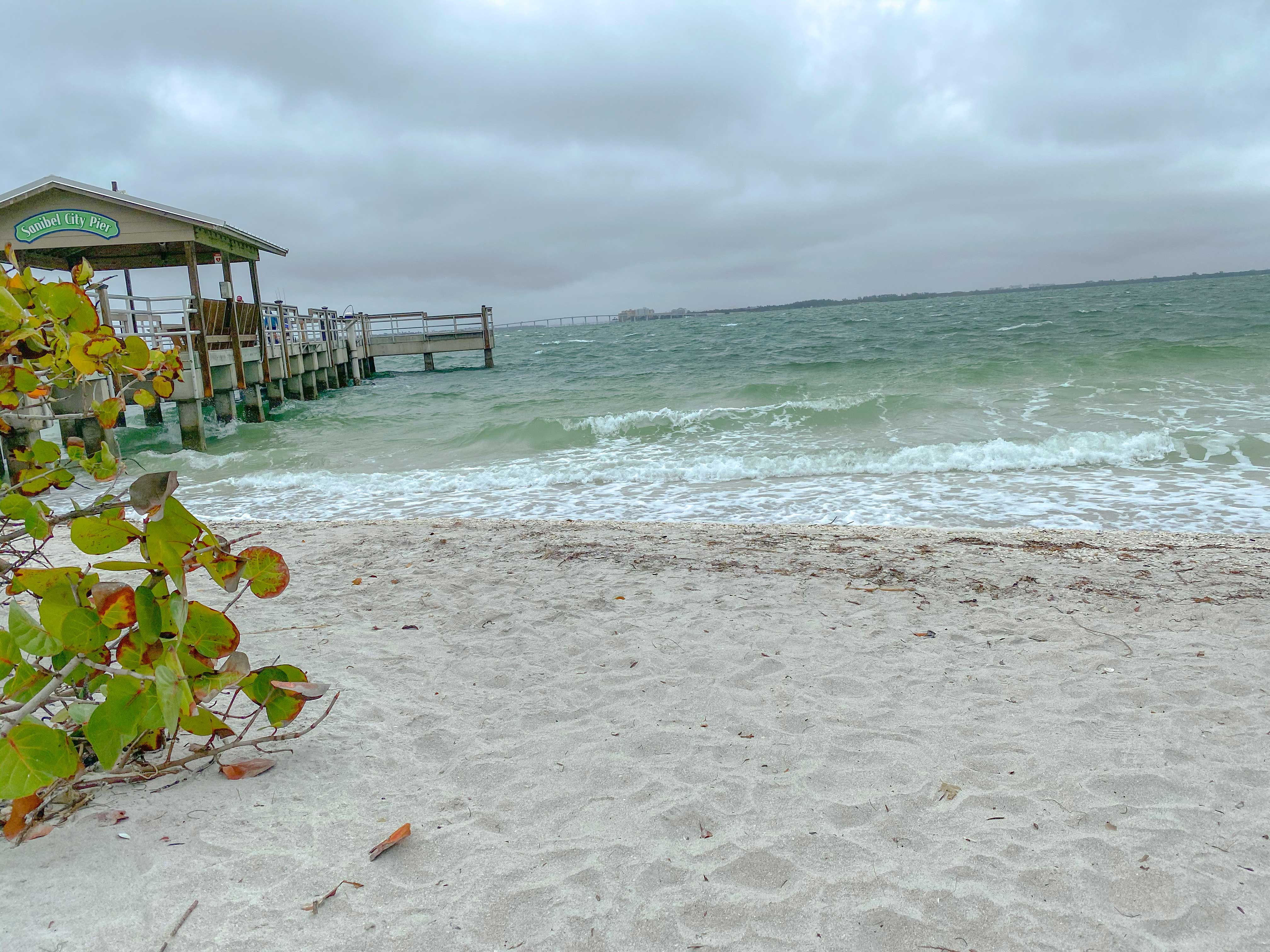
While Bowman’s Beach and the J.N. Ding Darling Wildlife Refuge take up the western side of the island, there is plenty to do on Sanibel’s eastern shore. We found great shelling around Sanibel Island Northern beach and Point Ybel in particular.
This area is also home to the Sanibel Beach Park and Lighthouse. As someone who has done extensive traveling around New England and Oregon where lighthouses are prevalent, it was interesting to see the very different and unique design of a Florida lighthouse.
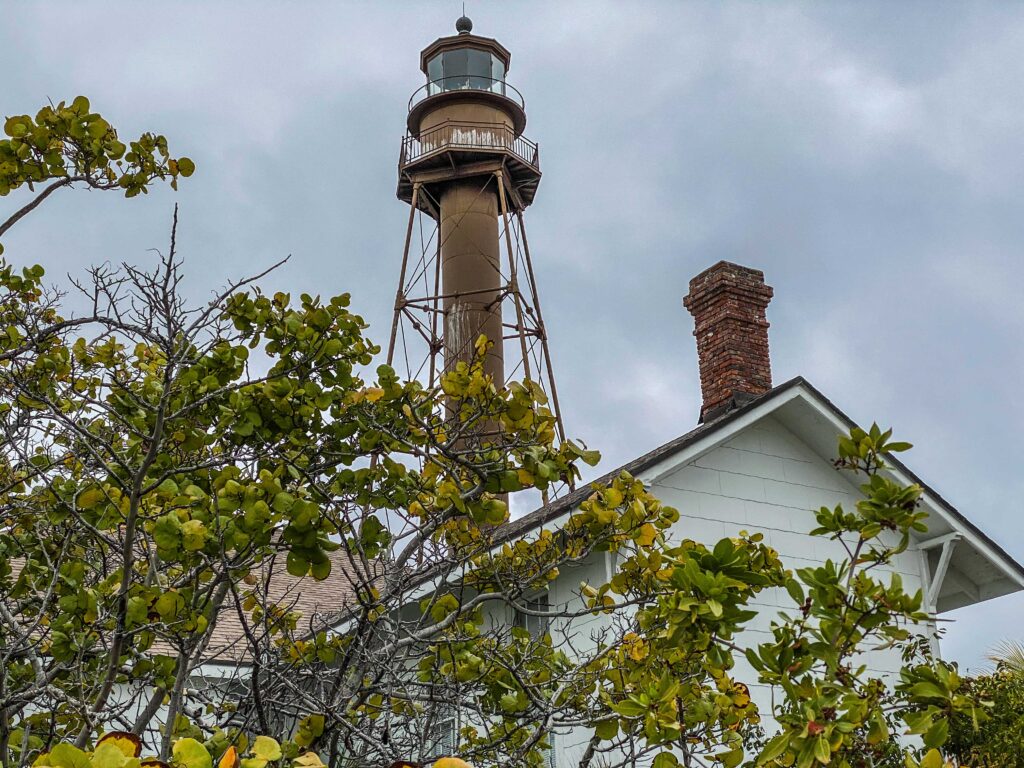
The one on Sanibel was first lit in 1884 with kerosene oil. The lightkeeper had to climb the external spiral staircase to refuel the light until 1949 when the light was officially automated. Today, the lighthouse remains on Sanibel under the ownership of the town.
There are two parking areas around the lighthouse. The first is located on Periwinkle Way at the point where the road seems to end. Driving onward will deposit you in the parking lot.
The second parking area is accessed by turning left at the point where Periwinkle Way appears to end. At this point, Periwinkle Way continues as a narrow side road providing access to Sanibel Island Northern Beach, a fishing pier and a trail to the lighthouse.
Cost to park is $5, and attendants do cruise through to make sure the fee is paid, so be sure to put your receipt on your dash to avoid receiving a ticket.
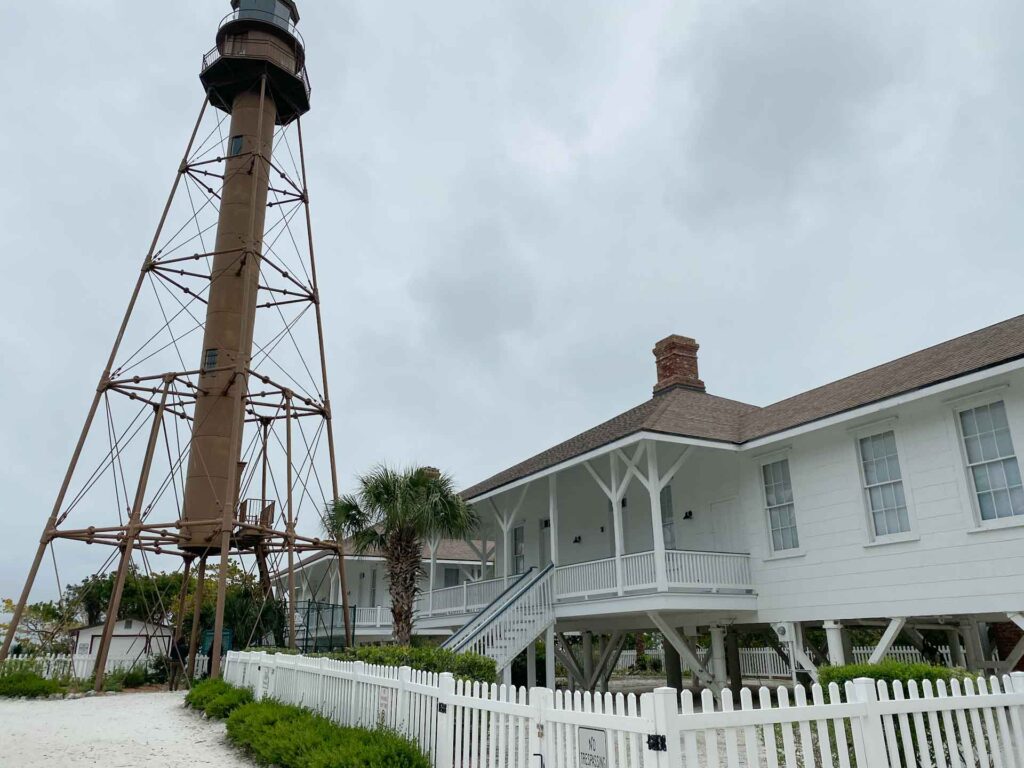
Unfortunately, many of the outbuildings that were part of the original lighthouse structure succombed to the force of Hurricane Ian’s ferocity. Some foundation remnants remain. Thanks to crews who worked tirelessly to replace on of the cast iron supports, Sanibel Lighthouse stands tall again, though you won’t be able to see the historic building structures that once flanked the lights. There are no plans to reconstruct these once valuable pieces of history.
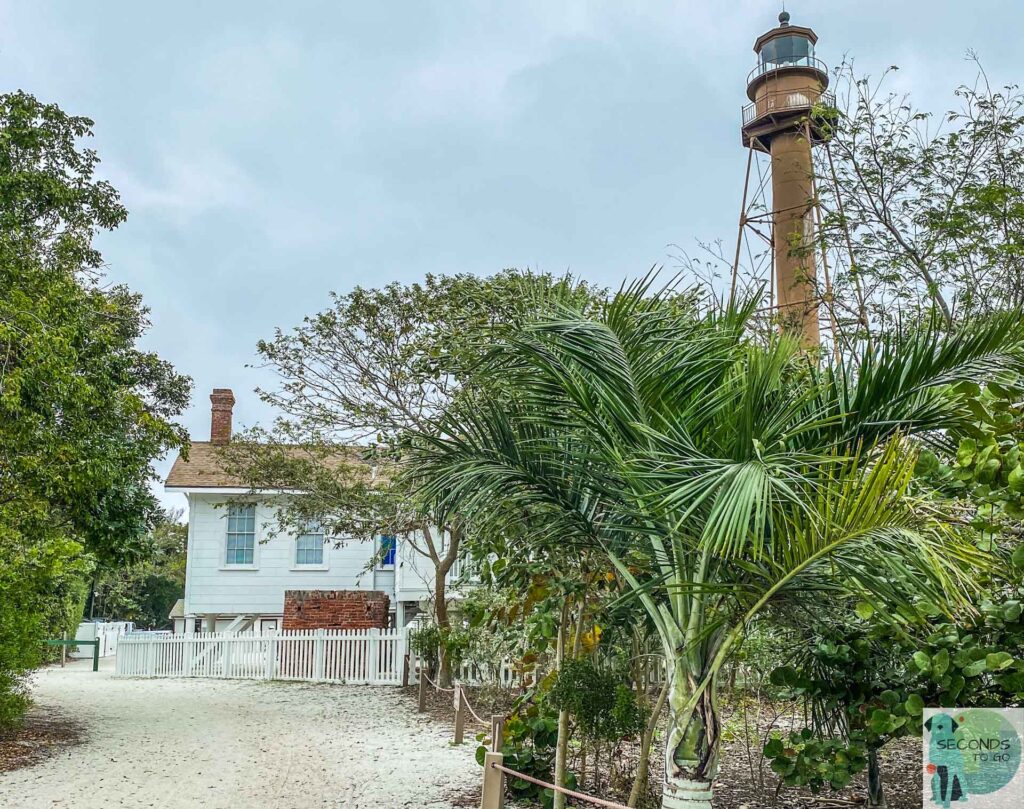
Places to eat on Sanibel Island
If you are out and enjoying the many things to do on Sanibel, you’re bound to get hungry.
We found two excellent eateries during our journeys that provided amazingly delicious fare. Both also offered outdoor seating, something that is always appealing when you’re escaping winter in the north.
Over Easy Café offers standard fare with some unique surprises, including stuffed pancakes and gulf shrimp omelets. The atmosphere is casual, and you’ll have the benefit of knowing that you’re enjoying Sanibel’s best breakfast as the many plaques on the wall informed us.
We were thrilled to hear that Over Easy Cafe reopened March 17, 2024, following Hurricane Ian, and remains open in 2025. If you’re traveling to Sanibel, be sure to keep this excellent reataurant on your radar.
Over Easy Café is located at 630 Tarpon Bay Road, not far from the Ding Darling Wildlife Refuge, so it makes a great stop while waiting for your kayak tour or when visiting the park.
Our favorite find while exploring the many things to do on Sanibel was the Blue Giraffe. Hungry and a little chilled after beachcombing in the morning, we stumbled into the warm ambiance of the Blue Giraffe to find unique and hearty dishes for selection on the menu.
The food truck tacos were amazing, the type of dish that encourages you to keep eating long after you know you should stop. Bert’s Breakfast was another favorite, filled with chunks of corned beef and topped with two eggs, sunny side up.
While the Blue Giraffe has reopened, it seems their menu has changed. However, if the new menu items are half as good as the dishes described above, this restaurant is worth a stop when exploring the island.
The Blue Giraffe is located at 2075 Periwinkle Way, so it makes a good stop as you head toward the lighthouse at the eastern end of the island.
Things to Know When Visiting Sanibel Island
Hopefully, we’ve answered the question on Sanibel and what to do, but there are few other things you’d probably want to know before visiting.
First, this is a cyclist’s town. In fact, we think one of the best ways to visit the island is to rent bikes and spend a couple of days peddling around. You’ll find over 25-miles of networked paths and roadways. Just keep in mind that much of the forest vegetation was destroyed in Hurricane Ian. That means the tree canopy is lacking, so shade from the Florida sun may be sparse, depending on where you are riding.
You’ll also find bike lanes on most major roadways, but if you decide to drive, remember that cyclists and pedestrians have the right of way.
If you are driving, listen to your GPS or phone navigation, particularly if it tells you to avoid main roads. We ignored the advice from Google maps as we left the island, figuring that we knew the way well enough. We were quickly ensnarled in a line of traffic that resulted in an hour-long trip off the island. We could have easily avoided the traffic by following the GPS guidance and taking the lesser-traveled Periwinkle Way.
